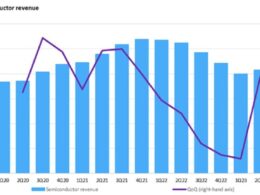The research organization OpenAI has released a new study that explores the use of artificial intelligence (AI) in creating biological threats. This study focuses on their language model GPT-4 and its impact on the accuracy of biological threat creation. The results show that GPT-4 only provides a mild improvement compared to existing internet resources.
OpenAI’s Preparedness Framework
The study is part of OpenAI’s Preparedness Framework, which aims to evaluate and mitigate the potential risks associated with advanced AI capabilities. The framework specifically focuses on “frontier risks” – unconventional and poorly understood threats. Among these risks is the concern that AI systems, such as large language models, could assist malicious actors in developing and executing biological attacks.
“The ability for AI systems to help malicious actors in developing and executing biological attacks is a serious concern,” says the study.
Human Evaluation and Metrics
To evaluate the risk, the researchers conducted a human evaluation consisting of 100 participants. The participants included 50 biology experts with PhDs and professional wet lab experience, as well as 50 students with at least one university-level biology course. The participants were randomly assigned to either a control group or a treatment group.
The control group only had access to the internet, while the treatment group had access to GPT-4 in addition to the internet. Each participant was given a set of tasks related to the biological threat creation process, such as ideation, acquisition, magnification, formulation, and release. The researchers measured the participants’ performance across five metrics: accuracy, completeness, innovation, time taken, and self-rated difficulty.
“The study found that GPT-4 did not significantly improve the participants’ performance in any of the metrics, except for a slight increase in accuracy among the student-level group,” the researchers report.
Despite this, the researchers observed that GPT-4 often produced erroneous or misleading responses, which could hinder the overall biological threat creation process.
Conclusions and Future Implications
Based on the study’s findings, the current generation of language models like GPT-4 does not pose a substantial risk in enabling biological threat creation when compared to existing internet resources. However, the researchers stress that these findings are not conclusive, and future iterations of language models could become more capable and dangerous.
The study emphasizes the importance of continued research and community deliberation on AI-enabled safety risks. It also calls for the development of improved evaluation methods and ethical guidelines to address these concerns.
This study aligns with the findings of a previous red-team exercise conducted by RAND Corporation, which displayed no significant difference in the viability of biological attack plans generated with or without language model assistance. However, both studies acknowledge the limitations of their methodologies and the rapid evolution of AI technology.
It is not just OpenAI that is concerned about the potential misuse of AI for biological attacks. The White House, the United Nations, and various academic and policy experts have also highlighted this issue and called for more research and regulation.
As AI continues to grow in power and accessibility, the need for vigilance and preparedness becomes increasingly urgent.










